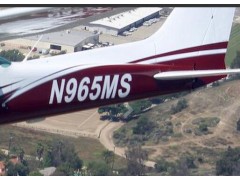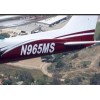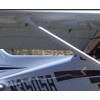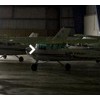The first rating after attainment of the private pilot certificate is normally the instrument rating, typically obtained at approximately 200 hours of total flight time – the FAA no longer requires specific minimum total hours for this rating). The instrument rating prerequisite includes 50 hours of pilot-in-command cross-country after the private pilot certificate (each flight at least 50 nautical miles from point of departure) and 40 hours of instrument flight time. The most efficient route to the instrument rating involves beginning work on the instrument rating immediately after receiving the private pilot certificate. Your flying schedule after the private license should be oriented towards the 50-hour cross-country requirement, and considerable instrument experience can be accumulated by utilization of a vision limiting device (an instrument hood) with an appropriately rated safety pilot aboard. This experience can be attained without a flight instructor aboard during cross-country flights, but the safety pilot must be a private pilot (although not necessarily instrument rated). This all takes a lot of personal discipline when sight-seeing flights might be the preferred way to travel, but it does provide a more efficient route to the instrument rating.
Simulators (flight training devices) are an excellent method of obtaining instrument experience. In many ways, flight simulators are superior to aircraft for instrument training, and up to 20 of the required 40 hours may be completed in an approved simulation device (such as those utilized in the Mt SAC program). Academically, this is the most advanced license or rating, since it requires considerable coordination and mental skills at a time when the student is still fairly low in flight experience. Under ideal conditions, the student could obtain the private pilot certificate during the second semester at Mt SAC and the instrument rating by the end of the fourth semester.
The approximate cost of the instrument rating would be approximately $8,500, dependent upon type of aircraft selected for the instrument rating. Most of our students prefer to complete their instrument rating in Mt SAC's Cessna 172 due to its cockpit instrumentation and the increased stability of a larger aircraft for instrument flying. These prices also assume maximum utilization of the college's flight simulators, an innovative method of reducing the total cost of the rating. The same medical certificate (Class III) obtained as a student pilot may be utilized for the instrument rating (it is valid for a total period of three years, under age 40). And, of course, the flight time towards the instrument rating can also be utilized as required flight experience towards the Commercial Pilot Certificate.













